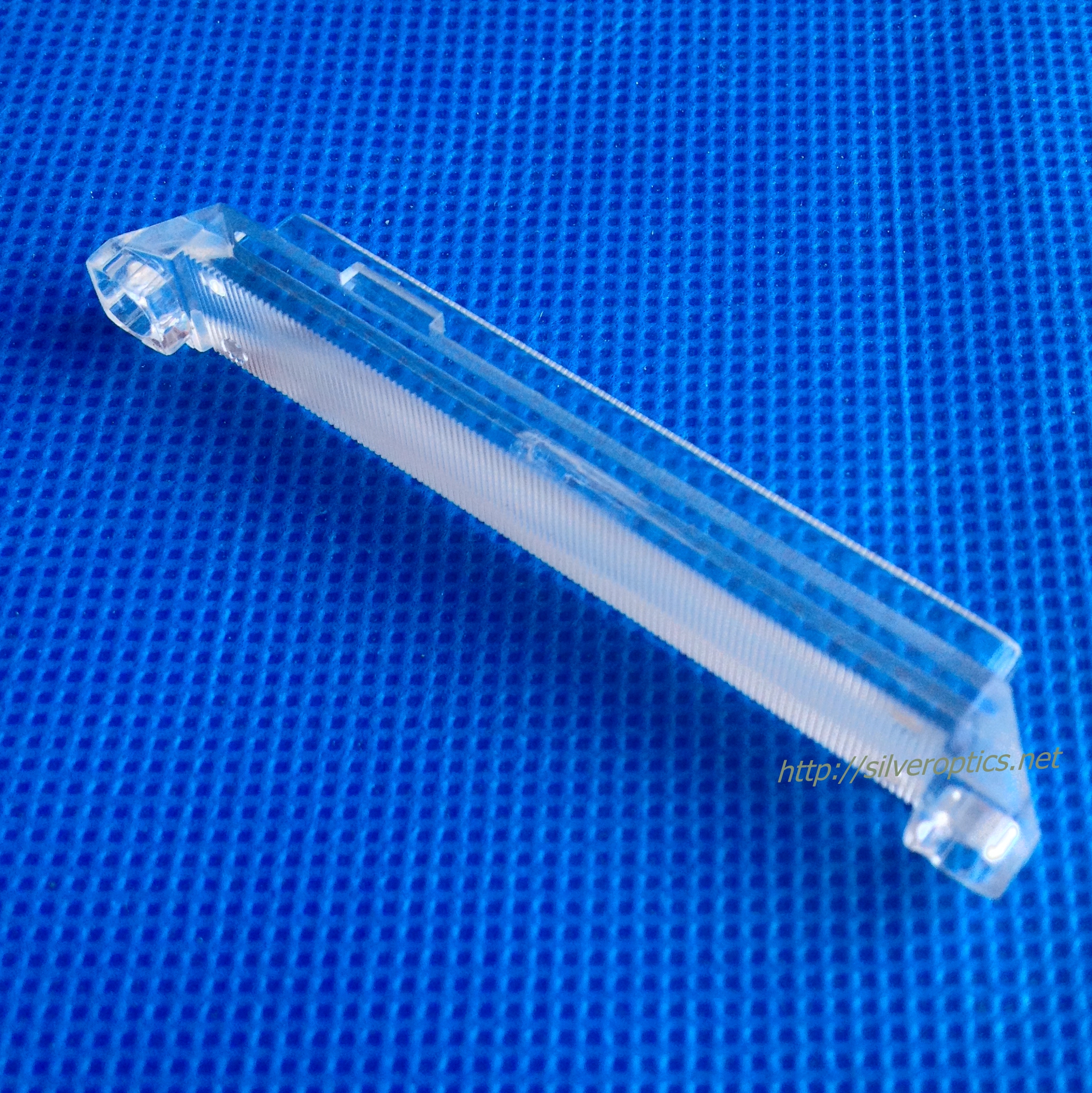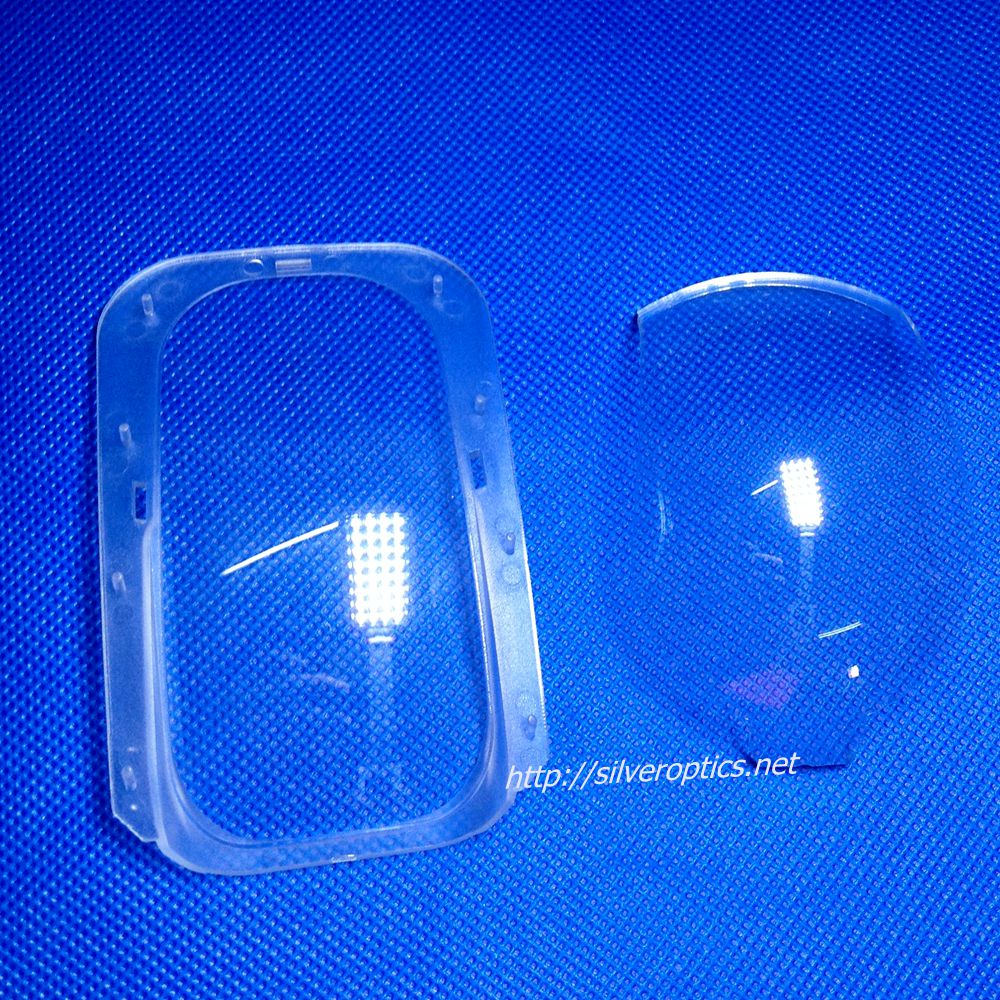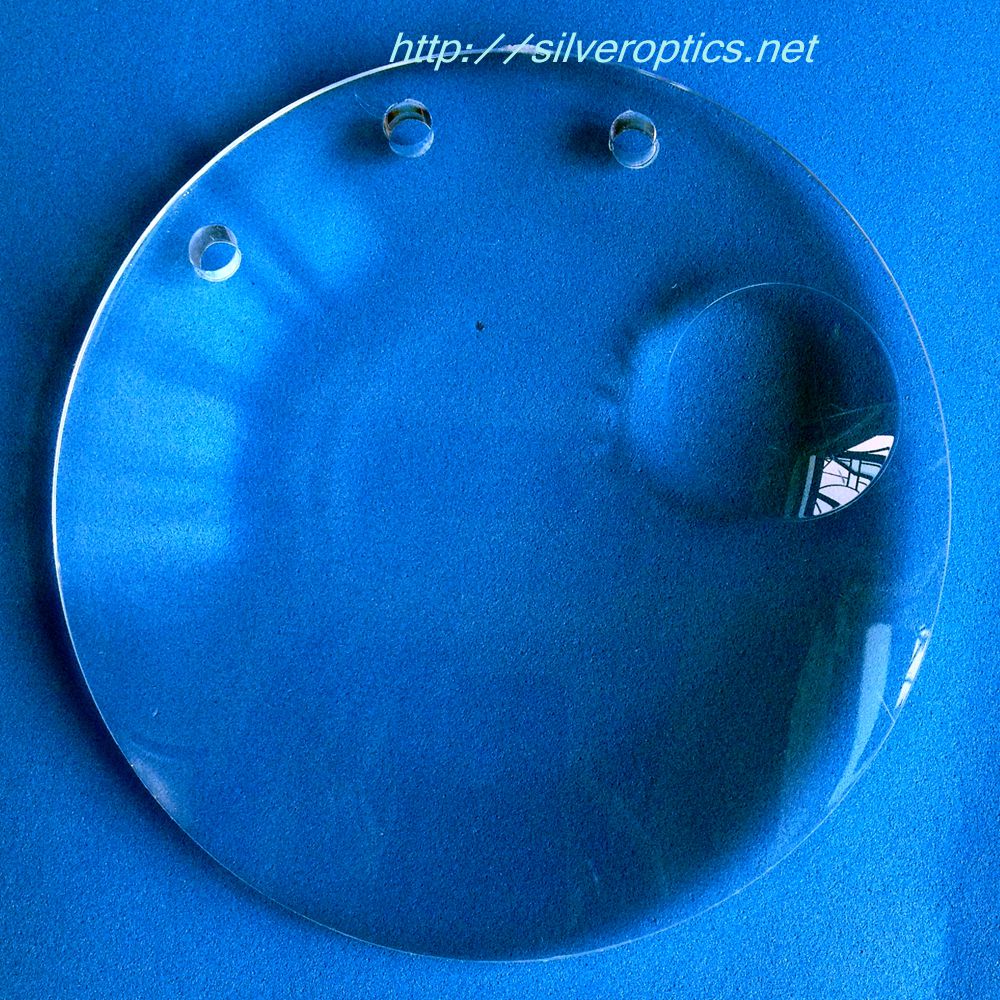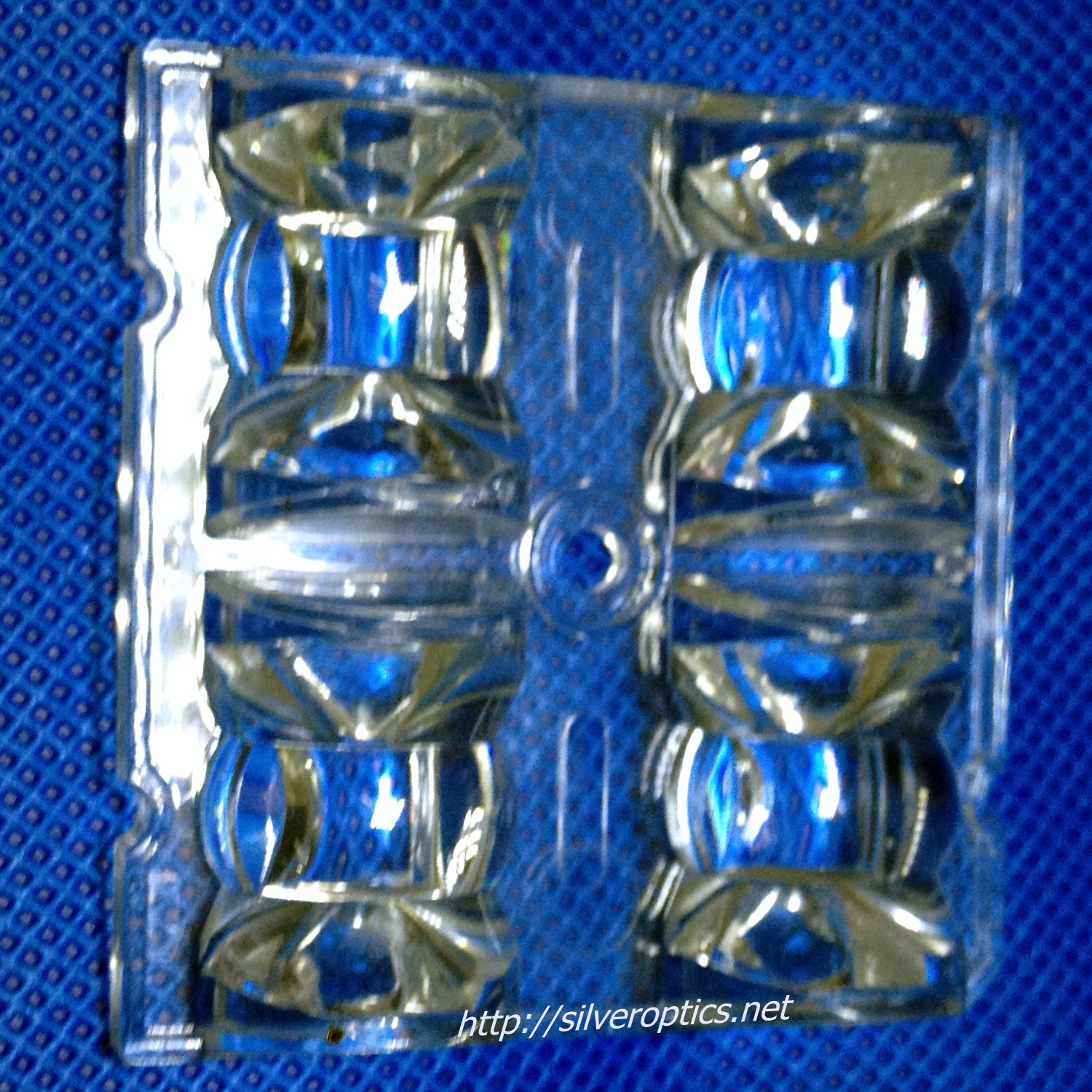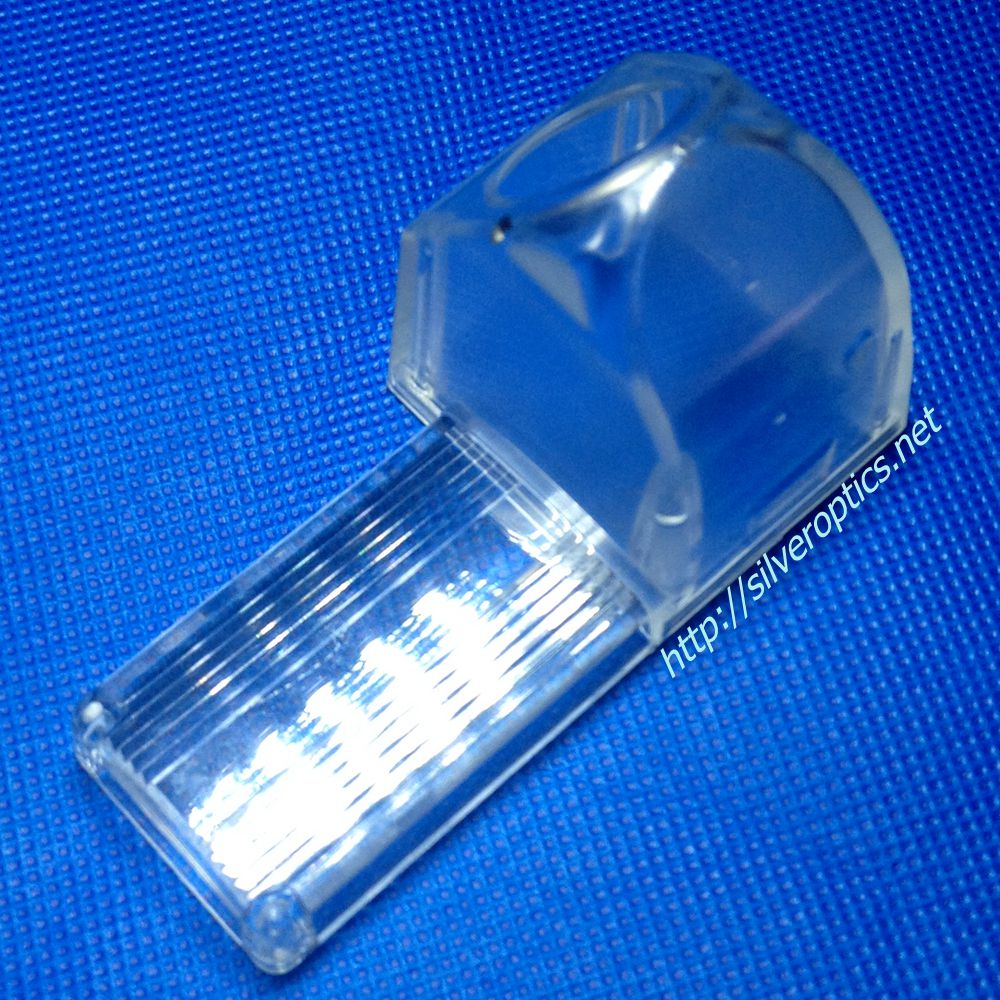A prism light guide, also known as a prism waveguide or simply a light guide, is an optical component used in various devices to guide and manipulate light. It consists of a transparent material with specific geometric shapes, such as prisms or grooves, that can effectively guide light through total internal reflection or other optical phenomena.
Here are some key points about prism light guides:
1. **Light Guidance:** Prism light guides are designed to direct light from one location to another with minimal loss or dispersion. They can be used to transmit light over distances within a device or redirect light in a controlled manner.
2. **Applications:** Prism light guides find applications in a wide range of devices and systems, including optical instruments, displays, lighting fixtures, and optical communication systems. For example, they are commonly used in LCD displays to distribute backlighting evenly across the screen or in fiber optic systems to couple light between fibers.
3. **Design:** The design of prism light guides depends on the specific requirements of the application. Factors such as the desired light output pattern, efficiency, and size constraints influence the shape and arrangement of the prisms or other optical structures used in the light guide.
4. **Material:** Prism light guides are typically made from materials with high optical transparency, such as glass or transparent polymers like acrylic or polycarbonate. These materials allow light to propagate through the guide with minimal absorption or scattering.
5. **Advantages:** Prism light guides offer several advantages, including efficient light transmission, flexibility in shaping and directing light, and compatibility with compact and lightweight device designs. They are also relatively simple to manufacture and integrate into various systems.
Overall, prism light guides play a crucial role in enabling efficient and controlled light propagation in a wide range of optical applications, contributing to advancements in fields such as displays, telecommunications, and lighting technology.
3. **Design:** The design of prism light guides depends on the specific requirements of the application. Factors such as the desired light output pattern, efficiency, and size constraints influence the shape and arrangement of the prisms or other optical structures used in the light guide.
4. **Material:** Prism light guides are typically made from materials with high optical transparency, such as glass or transparent polymers like acrylic or polycarbonate. These materials allow light to propagate through the guide with minimal absorption or scattering.
2. **Applications:** Prism light guides find applications in a wide range of devices and systems, including optical instruments, displays, lighting fixtures, and optical communication systems. For example, they are commonly used in LCD displays to distribute backlighting evenly across the screen or in fiber optic systems to couple light between fibers.






